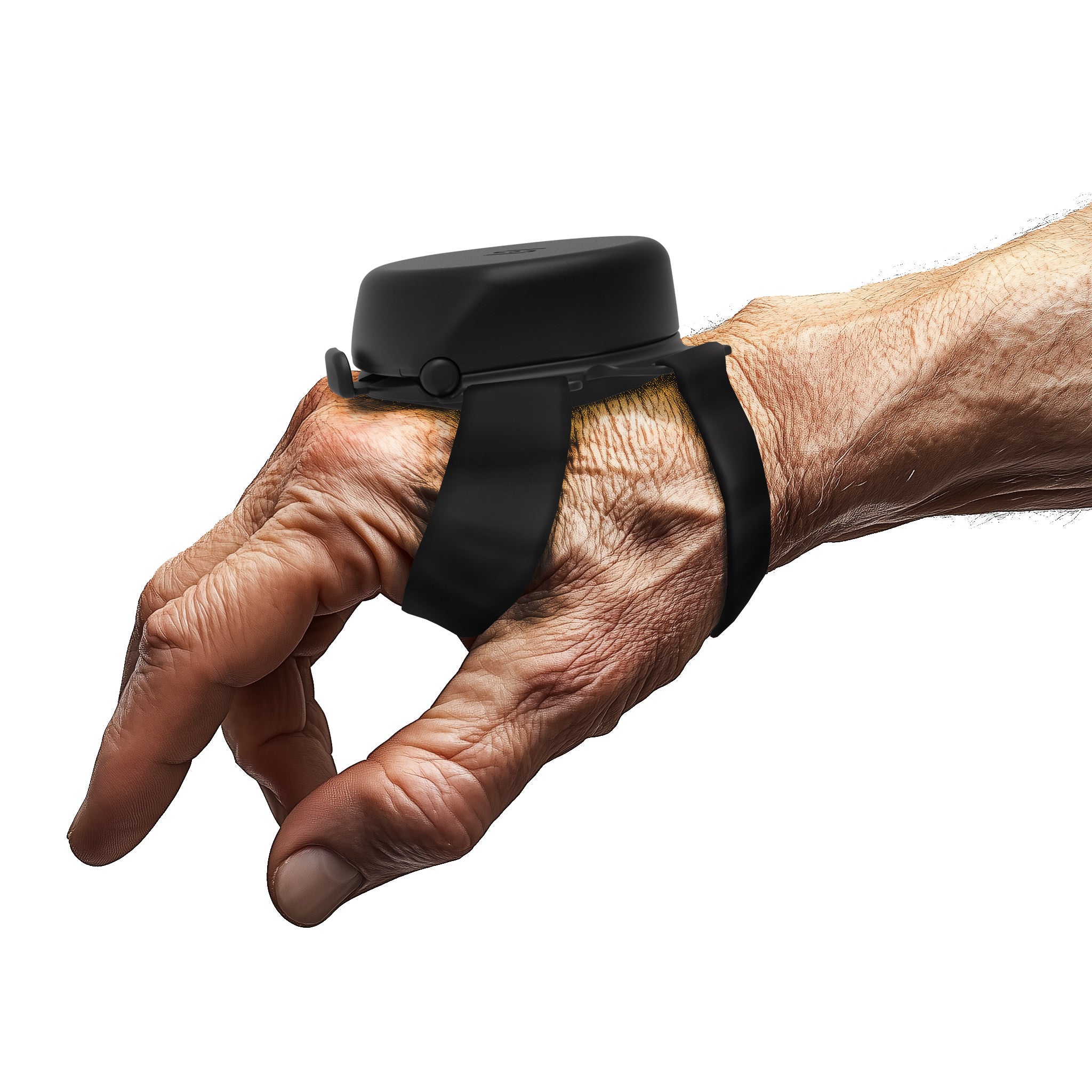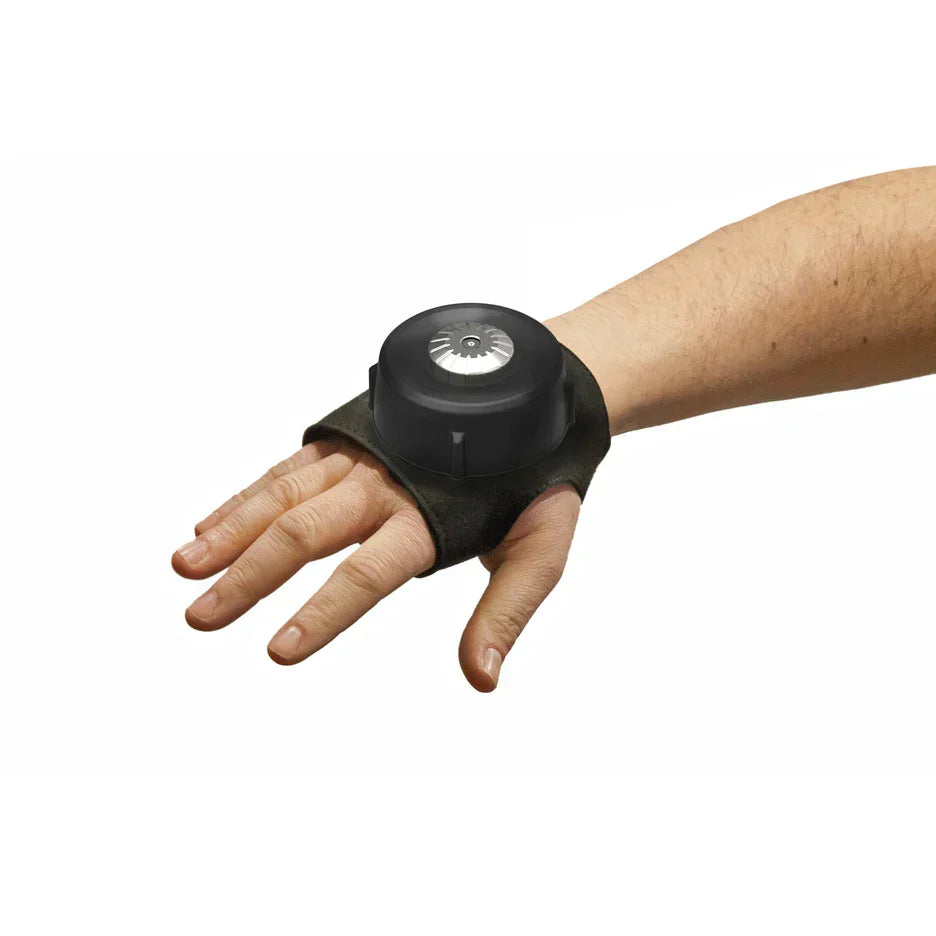Tremors are frequently seen as a single condition, yet they exist in multiple forms, each presenting unique challenges and affecting daily life in different ways. Distinguishing between intention and essential tremor is not just a matter of medical semantics—it's a crucial differentiation that can guide effective management and treatment strategies.
In this article, we will dissect the nuances between these two common types of tremors, exploring the symptoms, causes, and implications of each.
What is an Essential Tremor (ET)?
Essential tremor (ET) is a neurological condition causing involuntary shaking, often in the hands. This shaking occurs during everyday activities and can make tasks like eating or writing challenging. Hand tremor due to essential tremor (ET) is a neurological condition that causes involuntary rhythmic shaking, typically manifesting in the hands during activities like eating, dressing, or writing. This condition often leaves individuals dealing with persistent shaky hands, affecting their ability to perform daily tasks confidently.
What Causes Essential Tremor?
The exact cause of essential tremor (ET) is still unknown, but it is believed to have a strong genetic component, often running in families. Around half of all ET cases are linked to inherited gene mutations, making it a hereditary condition. Environmental factors and changes in brain activity, particularly in areas controlling movement, may also contribute to ET. This tremor usually affects the hands and upper body, particularly during voluntary movements, making daily tasks like eating or writing challenging for those affected.
Essential tremor (ET) can leave many wondering, Why do I feel shaky inside?. Though its exact cause is unclear, genetics play a key role, with many cases appearing within families.
What is Intention Tremor (IT)?
Intention tremor (IT) is a type of movement disorder characterized by shaking that becomes more noticeable during purposeful, targeted actions, such as reaching to touch an object. Unlike other types of tremors that may occur at rest, intention tremor intensifies as the affected limb approaches its goal, often due to issues in the cerebellum, the part of the brain responsible for coordination. This condition can interfere with tasks requiring fine motor skills, like buttoning a shirt or writing.
What Causes Intention Tremor?
Intention tremor is a movement disorder noticeable during targeted actions, often linked to issues in the cerebellum. The tremor becomes more intense as the affected limb nears its goal. The tremor typically worsens as the affected limb approaches its destination, such as reaching to press a button or touching one's chin. This section will navigate the intricacies of intention tremor, examining its clinical presentation, its impact on tasks requiring fine motor skills, and the journey patients often take from noticing the first signs to receiving a definitive diagnosis.
Resting Tremors: A Separate Class
It's vital to differentiate between tremors that occur during relaxation, such as when hands rest on one's lap, and those that manifest during movement. The former is commonly associated with Parkinson's disease.
Root Causes of These Tremors
Intention tremors and essential tremors often stem from neurological factors, including cerebellum-related conditions such as multiple sclerosis or genetic disorders. These involuntary movements often originate from cerebellum complications, a crucial brain region for motor control. Potential triggers include multiple sclerosis (MS), brain tumors, and conditions like spinocerebellar ataxia.
How Do Essential Tremor and Intention Tremor Differ?

|
Tremor Type |
Symptoms |
Causes |
Treatments |
|---|---|---|---|
|
Essential Tremor |
Shaking primarily in the hands, sometimes in the head and voice. It often appears during voluntary movements (e.g., eating, writing). |
Genetic factors; tend to run in families. |
Medications (like beta-blockers and anticonvulsants), assistive devices (e.g., Steadiwear stabilizing gloves), and sometimes botulinum toxin injections. |
|
Intention Tremor |
Tremor worsens during purposeful, targeted actions (e.g., reaching for an object). The shaking intensifies as the limb nears its target. |
Often linked to cerebellum dysfunction or damage, which affects movement coordination. |
Physical therapy to improve motor control, use of specialized devices to aid stability, and treatment aimed at underlying conditions if identified. |
Managing Involuntary Movements:
Hand tremors from essential and intention tremors can be managed with a variety of treatments, including medications, physical therapy, and assistive devices When it comes to addressing involuntary movements associated with intention tremors and essential tremors, a multifaceted approach is paramount.
To manage hand tremors, consider:
Medical treatments, such as:
- Beta-blockers
- Anticonvulsant medications
- Botulinum toxin injections
These options can provide relief for some patients, particularly those with essential tremors. The choice of medication is personalized based on the individual’s health profile, tremor severity, and daily activity impact.
Physiotherapy plays a critical role in managing these conditions through:
- Tailored exercises designed by physical therapists to strengthen muscles and improve neuromuscular coordination, potentially reducing tremor severity.
- Techniques like weighted wristbands provide additional stability, assisting with daily tasks such as writing or eating.
The advent of medical devices has been a game-changer for many individuals. Specialized utensils, writing tools, and even computer software can compensate for involuntary movements, enabling patients to maintain independence and continue with their daily routines.
Steadiwear: A Beacon of Hope

For individuals dealing with shaky hands and hand tremors, Steadiwear provides a medical device specifically designed to stabilize these involuntary movements. By using intelligent fluid technology, our stabilizing gloves actively dampen tremors, giving users a more controlled and steady hand. This advanced medical device is not just a solution but a testament to the growing possibilities in assistive technology for those facing daily challenges due to hand tremors. Whether it's holding a glass, typing on a computer, or simply enjoying a meal, our product aims to empower users to live more confidently and independently. For more information about how we can help manage tremors, visit their website here.
Engaging in open dialogues with healthcare professionals is crucial. It allows for the exploration of all available treatment options and the customization of a management plan that aligns with the patient's specific needs and lifestyle. Each treatment plan is dynamic and may evolve as the condition changes or new treatments become available.
Involving loved ones in these discussions and the overall management plan can significantly enhance the support system for the individual with tremors. Family and friends can provide emotional support, assist with exercises, and help with the adaptation to assistive devices. Their understanding and involvement can be a powerful source of comfort and encouragement, making the management of tremors a shared journey rather than an isolated battle.
This comprehensive approach to managing involuntary movements can not only alleviate the physical symptoms but also provide psychological and emotional benefits, contributing to an overall better quality of life for those living with intentional tremors and essential tremors.
FAQs
Essential tremors typically appear during voluntary movements, affecting tasks like writing or holding a cup, and often impact both hands. Intention tremor, in contrast, worsens as the hand approaches a target and is often linked to cerebellar issues. This type of tremor is usually associated with cerebellar dysfunction or damage. Understanding the difference between these types is crucial as each requires a distinct approach to hand tremor management and treatment.
Differentiating these types is key, as each requires a tailored treatment approach.
While some treatments may overlap, managing essential tremors and intentional tremors requires tailored approaches. Essential tremor is often managed with medications like beta-blockers or anticonvulsants, which help to reduce shaky hands. For intentional tremors, treatment focuses more on addressing the underlying condition affecting the cerebellum, as these tremors are often linked to neurological issues. Physical therapy and occupational therapy are essential for both types of tremors, helping improve muscle control and coordination. Additionally, using adaptive tools and medical devices such as stabilizing gloves can aid in daily activities, providing relief from hand tremors.
Yes, lifestyle changes can help manage tremors. Reducing caffeine, alcohol, and stress can lessen symptom severity. Exercises and tools like weighted utensils also aid in daily function, as do adaptive devices for stabilizing tremors. Moreover, implementing ergonomic adjustments and using adaptive tools such as weighted utensils can enhance daily functioning. Specialized medical devices like our stabilizing gloves can provide additional support by counteracting hand tremors during daily tasks. These combined efforts can help individuals maintain their independence and improve their overall quality of life.
Surgery can be an option for managing severe cases of essential tremors that don't respond to medication or therapy. Deep brain stimulation (DBS) is the most common surgical procedure used to reduce hand tremors in patients with essential tremors. This involves implanting a device that sends electrical impulses to targeted areas of the brain, effectively reducing tremors. However, for intentional tremors, surgery is not typically the first line of treatment, as the focus is on addressing the underlying cerebellar dysfunction. Only if there is a specific, identifiable cause may surgical interventions be considered for intentional tremors.
To accurately diagnose essential tremors or intentional tremors, a thorough medical evaluation is needed. Essential tremor is typically diagnosed based on the presence of rhythmic shaking during voluntary activities and the absence of other neurological symptoms. This type of hand tremor is usually symmetric and often worsens with action or stress. Intention tremor, on the other hand, requires a more detailed neurological examination and may involve imaging tests to identify issues within the cerebellum. Identifying whether the tremor worsens as the hand approaches a target can help distinguish between these two conditions, allowing healthcare professionals to provide the appropriate medical device or therapeutic intervention.
People Also Ask:
How is intention tremor treated?
- Treatment for intention tremor focuses on the underlying cause. Physical therapy can improve motor coordination and control, while adaptive devices aid stability during tasks. Medications are less effective for intention tremors, so treatment is often personalized to address cerebellar issues. Lifestyle modifications, such as minimizing caffeine intake, may also help manage symptoms.
Is essential tremor hereditary?
- Yes, essential tremor often has a hereditary component and can run in families. Studies show that people with a family history of essential tremor are more likely to develop the condition. However, environmental factors may also play a role. While there is no cure, medications, therapy, and stabilizing devices can help manage symptoms.
Conclusion:
Confronting the realities of intention tremor and essential tremor is no small feat, but with the right combination of medical intervention, physical therapy, and supportive technologies, the journey can be one of empowerment rather than limitation. Each person's experience with tremors is unique, and so too should be their management plan. The key lies in a personalized approach—one that adapts to the individual's evolving needs and maintains their quality of life.
It's important to remember that while tremors may be a part of your life, they do not define it. With advancements in medical treatments, innovative assistive devices, and a supportive network of healthcare professionals and loved ones, living with tremors can still mean living fully.
We encourage those affected by tremors to continue the conversation with their healthcare providers, to stay informed about new treatments and strategies, and to reach out to communities and resources that can offer additional support.
Remember, your journey with tremors is a shared one, and with the collective knowledge and resources available, you can navigate the challenges with confidence and resilience.



